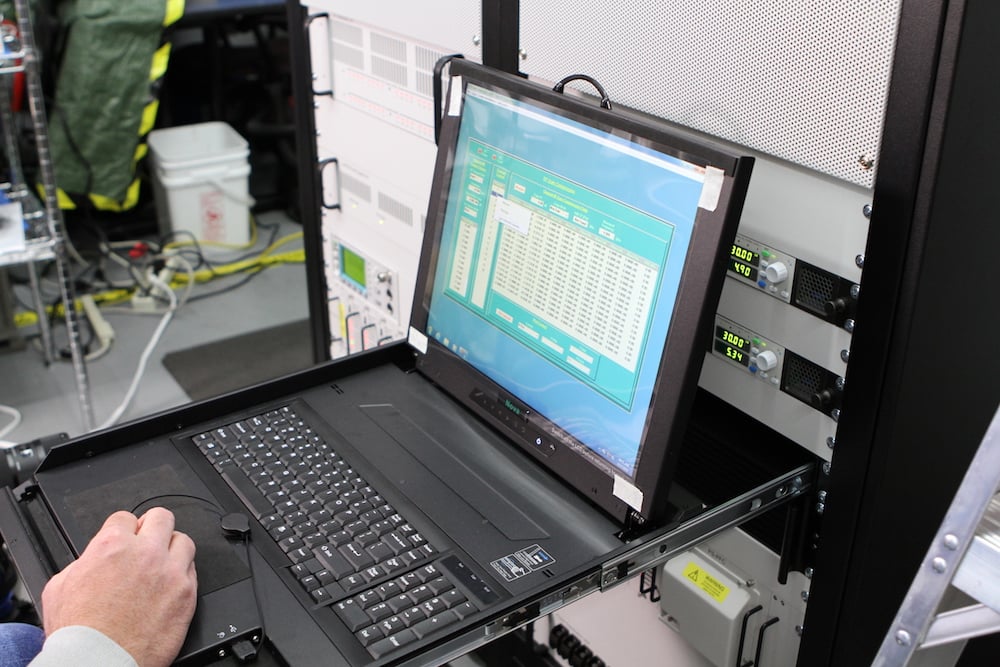5G wireless promises to revolutionize every aspect of communications. The redesign of the global cellular phone network will be the most noticeable, at least initially. Designers of base transceiver stations are pushing existing electronics technology to its bounds to usher in the infrastructure to support the system.

Implementing a global project of this scale requires a fair amount of paradigm-shifting. One area where a jump is particularly needed is reliability testing. New requirements necessitate higher-performing IC materials like Gallium Nitride (GaN) to replace the legacy of components based on silicon. The methods used to predict the life expectancy of semiconductor chips designed for a previous era are no longer enough.
Accel-RF leads the way in reliability testing and device characterization methods for the new generation of 5G technology. The company's pioneering equipment uses Wideband Code Division Multiple Access (WCDMA) modulation testing to mirror conditions devices will face once deployed in the 5G network.
Rigorous Demands of 5G Wireless
The vast speed increase and latency reduction of 5G cellular come with a significantly higher performance demand on the hardware that will make it work. Transmission signals containing multiple signals will offer consumers advanced capabilities and higher speed.
Frequencies in the millimeter-wave (mmW) category (30 GHz - 300 GHz) will provide the necessary bandwidth to enable streaming and increased data transfer. Since these extremely short waves do not travel far, the network needs a high density of transmitters for coverage.
As 5G matures, customers will no longer receive signals from transmitter towers covering miles of territory. These massive amplifiers supported by immense structures require temperature control because of the heat they generate. The highest performing LDMOS devices start losing performance and creating too much heat at anything much beyond 6 GHz.
In the 5G model, transmitters will reside on buildings, lampposts, trees, and even moving vehicles. The higher frequency and increased power-efficiency demands, coupled with the need for a small physical size, rule out using traditional silicon technology chips. For 5G New Radio (NR) RF transmitter requirements, designers have found Gallium-Nitride compound semiconductor technology to meet their rigorous demands.
Gallium-Nitride vs. Silicon
The unique properties of Gallium-Nitride (GaN) compound semiconductor devices give designers technology to meet 5G requirements for expected and growth demands. This is critical for the network. Designers understand that today’s envisioned cellular network is only the start of a network yet to be fully imagined. GaN supports higher power density and carrier frequencies. These two benefits make possible circuitry in a smaller package, the primary requirement for segmented transmission nodes needed for implementing the 5G network. GaN material also performs at extremely high temperatures. This property is excellent for dissipating power, which generates self-heating and locating equipment in remote environments that are difficult to add cooling systems and thermal protection materials.
The physical properties of GaN are compelling for its use in the new era of communications. However, it is only cautiously accepted for early implementation. Why? GaN lacks the decades of extensive field and test data for failure rate statistics available in existing technologies such as silicon. When designers are implementing a system containing silicon technology, they can obtain confident performance degradation statistics for determining safety margin and maintenance costs: information critical to their customers for understanding the operational costs and difficulties of maintaining the physical network.
GaN will be the essential technology of choice. Ready to explore why?
GaN is relatively new to commercial applications and is not fully characterized from years of field failure analysis. The material, recently incorporated into innovative technologies, has no pedigree of successful testing to commercial industry standards. To complicate the qualification issue, reliability standards and practices have been developed and refined over many decades to be specific to silicon technology characteristics and have little relevance to the properties of GaN.
Devices designed around GaN for new technology insertion require new reliability performance and characterization testing standards to properly determine lifetime estimates. Testing for higher frequency, higher power density, higher RF output emissions, and a plethora of other performance indicators brings the necessity of new test equipment and testing methodologies.
The end customer and network provider, with potentially millions of dollars of investment in 5G infrastructure, demands a demonstrated level of reliability from the manufacturer, a reliability compared to an industry-developed standard. The dilemma is that since GaN technology is new, the industry standard is not yet developed and agreed upon. This situation will lead to a rogue level of early adoption and ultimately drive an inconsistent recognition of field reliability. To this end, manufacturers are looking to perform testing as close to the use-application as practical in order to lessen any early large level of field failures.
WCDMA Testing Advantages
Device manufacturers must have the ability to demonstrate several pieces of information confidently to their customers. First, they must show that their newly designed and un-fielded equipment will operate as specified and not fail before its expected useful lifetime.
Not only that, but the device must maintain a certain performance standard over a given period. In other words, the part might not fail in five years, but if its performance starts slipping after three, it could cause significant problems on the network.
Without a long history of reliability testing behind them, manufacturers find these predictions tough to stand behind. Since standard DC voltage and heat tests will not provide the necessary use-data for GaN devices on the 5G network, one solution is to test as used, implying among other things, testing under WCDMA modulation.

While many metrics could help determine a device's reliability statistics, most of the ones available are difficult and expensive to test. One straightforward way to measure device linearity degradation is Peak-to-Average Ratio (PTAV). By testing with WCDMA modulation, the format employed by 5G standards, PTAV deterioration can help extrapolate accurate statistics on device performance under actual operating conditions.
Different Roles, Different Needs
External requirements can play a big part in the testing program a manufacturer needs to adopt. But reliability testing often must meet different, sometimes seemingly competing, internal needs as well. Testing with WCDMA can help companies reach all their testing goals, inside and out, by providing answers to a wide variety of questions.
Different individuals with separate roles within a company typically have specific points they focus on the most. The reliability engineer is worried about the physics of the chip, its intrinsic reliability and failure mechanisms. The quality assurance engineer just wants to know that the device will perform up to industry standards and specifications. The marketing and application engineer intends to sell the equipment and requires the data that appeals most to the customer.
Tying it All Together
To do any good, testing data must have meaning. Reliability data could go to waste if everyone involved does not understand its significance and buy-in to the results.
Accel-RF excels at bridging the communication gaps between the distinct roles of the quality and reliability assurance engineering disciplines in the manufacturer. By cohesive analysis of the data required by these multiple roles in the organization, Accel-RF’s test instruments allow a quick development lifecycle to be carried out. Through the lens of extensive industry familiarity, Accel-RF experts can help design testing programs that meet multiple test validation objectives.
Accel-RF allows the manufacturer to produce meaningful data by starting with the end in mind. Taking the time to understand the product, the end-use, and the manufacturer’s concerns determine what measurements need to be carried out to demonstrate performance of interest. Knowing how to design application-specific testing and tell the product's story from intrinsic device technology through performance degradation characterization makes Accel-RF the perfect choice when making plans to enter the 5G device market.



